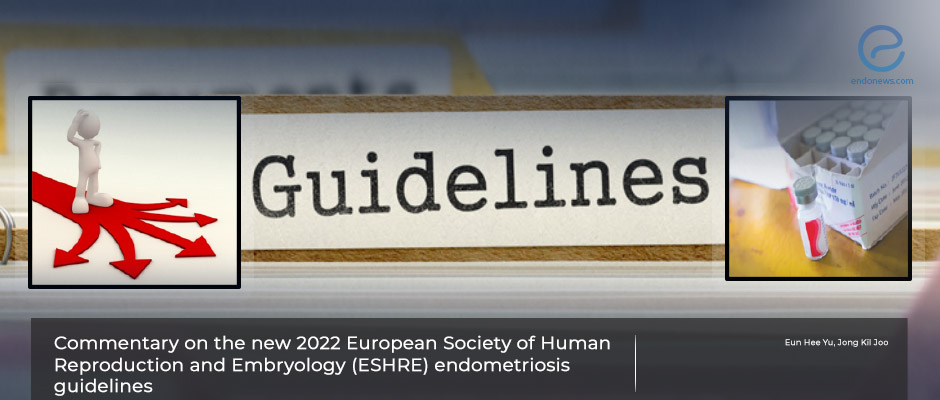New adapted ESHRE guidelines for endometriosis.
Apr 4, 2023
Notifications and recommendations based on 2022 ESHRE guidelines.
Key Points
Importance:
- ESHRE guidelines are the most frequently cited endometriosis-related guides. Refreshing knowledge of major updates will help with appropriate treatment.
Highlights:
- 2022 ESHRE guidelines recommend the most appropriate choice of medical treatment in endometriotic patients and explain the preparation for surgery who want pregnancy.
What's done here?
- This commentary is based on 2022 ESHRE guidelines and prepared by the South Korean author team to provide a brief overview of endometriosis treatment.
Outlines:
- Laparoscopy does not have to be the gold standard for diagnosis.
- GnRH antagonists can be considered as a second-line treatment for endometriosis-associated pain.
- Ultra-long protocol of GnRH agonists withdrawn during the treatment of endometriosis-associated infertility.
- When pregnancy is not desired, long-term hormone therapy is advised.
- Diagnosis and management of endometriosis in adolescence are not different from adults.
- Endometriosis-related symptoms can be present in menopause.
- Although endometriosis is related higher risk of ovarian, breast, and thyroid malignancies, the absolute increase in risk relatives is minimal in the general population.
Lay Summary
Eun Hee Yu and Jong Kil Joo from the Department of Obstetrics and Gynecology of Pusan National University School of Medicine, Republic of Korea, published a commentary on the 2022 ESHRE guidelines, referring to the representative changes and important updates in a recently published issue of the medical journal named "Clinical and Experimental Reproductive Medicine".
In the new guideline, GnRH antagonists were presented as a second treatment option for endometriosis-related pain, while danazol and anti-progestins withdrew. movement to the postoperative medical treatment also would reduce pain and illness recurrence in postoperative 12 months.
Endometriosis-Fertility İndex was added to the guideline for the first time. It is determined by historical variables such as age, number of years for infertility, previous pregnancies, and surgical variables including ASRM scores.
Extended administration of GnRH agonists before assisted reproductive techniques is no longer approved to increase the live-birth rate in infertile women.
Since the recurrence rate of endometriosis was reported to be up to 89,6% in several reports, preventing the recurrence has been underlined in this recently ESHRE-published guideline. Recommendations are ovarian cystectomy instead of drainage/electrocoagulation and postoperative hormonal treatment for at least 18-24 months.
Since clinicians need to provide their patients with educational information about their disease, endometriosis in the periods of menopause and adolescence is also considered along with the risk of malignancies in women with endometriosis.
Research Source: https://pubmed.ncbi.nlm.nih.gov/36482496/
guideline superficial endometriosis endometrioma deeply infiltrated endometriosis ESHRE laparoscopy imaging modalities endometriosis.

